for a phase sensitive measurement, I would like to have the DC offset of a signal cancelled. The AC-signal will be amplified and then the phase of it is measured in reference to another AC-signal. My attempt was using a Sallen-Key-Highpass filter with a cutoff frequency of 4 Hz which first worked fine. I recognised, that the phase of the filtered signal shifts with temperature which I want to avoid. I am using C0G ceramic capacitors (220 nF) and resistors with a relatively high resistance of 180 kOhms.
I read about the concept of the DC servo filter which I could also try to implement, but is it promising for what I want to achieve?
